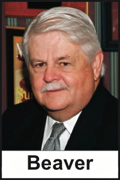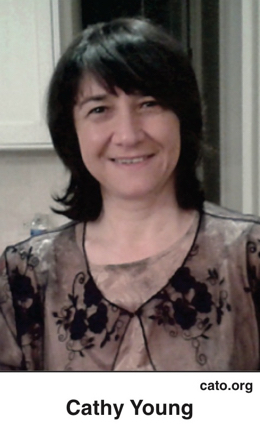Rascals case in brief
In the beginning, in 1989, more than 90 children at the Little Rascals Day Care Center in Edenton, North Carolina, accused a total of 20 adults with 429 instances of sexual abuse over a three-year period. It may have all begun with one parent’s complaint about punishment given her child.
Among the alleged perpetrators: the sheriff and mayor. But prosecutors would charge only Robin Byrum, Darlene Harris, Elizabeth “Betsy” Kelly, Robert “Bob” Kelly, Willard Scott Privott, Shelley Stone and Dawn Wilson – the Edenton 7.
Along with sodomy and beatings, allegations included a baby killed with a handgun, a child being hung upside down from a tree and being set on fire and countless other fantastic incidents involving spaceships, hot air balloons, pirate ships and trained sharks.
By the time prosecutors dropped the last charges in 1997, Little Rascals had become North Carolina’s longest and most costly criminal trial. Prosecutors kept defendants jailed in hopes at least one would turn against their supposed co-conspirators. Remarkably, none did. Another shameful record: Five defendants had to wait longer to face their accusers in court than anyone else in North Carolina history.
Between 1991 and 1997, Ofra Bikel produced three extraordinary episodes on the Little Rascals case for the PBS series “Frontline.” Although “Innocence Lost” did not deter prosecutors, it exposed their tactics and fostered nationwide skepticism and dismay.
With each passing year, the absurdity of the Little Rascals charges has become more obvious. But no admission of error has ever come from prosecutors, police, interviewers or parents. This site is devoted to the issues raised by this case.
On Facebook
Click for earlier Facebook posts archived on this site
Click to go to
Today’s random selection from the Little Rascals Day Care archives….
Click for earlier Facebook posts archived on this site
Click to go to
Today’s random selection from the Little Rascals Day Care archives….
‘Attached to their convictions’ – and then some
 Dec. 24, 2012
Dec. 24, 2012
“Why prosecutors sometimes fight post-conviction evidence so adamantly depends on each case. Some legitimately believe the new evidence is not exonerating.
“But legal scholars looking at the issue suggest that prosecutors’ concerns about their political future and a culture that values winning over justice also come into play. ‘They are attached to their convictions,’ (says Brandon Garrett, a law professor at the University of Virginia), ‘and they don’t want to see their work called into question.’ ”
– From “The Prosecution’s Case Against DNA” in the New York Times Sunday Magazine (Nov. 25, 2011)
“Attached to their convictions,” indeed. Nancy Lamb was so attached that in 1996, after Bob Kelly’s 99-count conviction was overturned, she rummaged around the office and turned up yet another molestation claim – this one from two years before the Little Rascals arrests.
Gerald Beaver, Kelly’s attorney, pointed out that the law requires any report of sexual abuse to be investigated immediately and called police investigator Brenda Toppin, who testified that she had told Lamb about the claim in 1992. Lamb denied any recollection of Toppin’s comment.
“All of this ‘We care about the children’ kind of went down the drain after the conviction,” Beaver said. “It was only when (Kelly) successfully appealed and was no longer pulling 12 consecutive life sentences that the state felt compelled to go out and find this witness.”
As usual, however, time proved no object for prosecutors dedicated to making life miserable for Little Rascals defendants. It would be 1999 before they dropped the final charge against Bob Kelly.
‘The right man’ was the wrong man? No way!
 March 19, 2012
March 19, 2012
In “The Folly of Fools: The Logic of Deceit and Self-Deception in Human Life” (2011), Robert Trivers briefly addresses the causes and costs of the ritual abuse mania.
I asked Trivers, professor of anthropology and biological sciences at Rutgers University, about the role played by prosecutors in such cases:
“Prosecutors are notoriously vulnerable to tunnel vision – i.e., once a suspect has been identified, others disappear from sight; they also need to justify themselves in retrospect.
“I was told by (Innocence Project cofounder Peter J.) Neufeld that even after incontrovertible DNA evidence, 75 percent of the original detectives who came up with (and helped convict) the wrong person still say they believe they got ‘the right man.’ ”
MPD renamed DID – but it’s still bunk
May 31, 2013
“After the DSM-III, often called the ‘Bible’ of psychiatric diagnosis, included (Multiple Personality Disorder) in 1980, thousands of spurious cases emerged in the next two decades, and special psychiatric clinics arose to treat them. Yet faced with evidence of this disastrous epidemic, the DSM-IV did not delete the diagnosis. Instead, the manual renamed it Dissociative Identity Disorder.
“ ‘MPD presented a dilemma for me,’ says (psychiatrist Allen Frances, who oversaw DSM-IV). ‘We took scrupulous pains to present both sides of the controversy as fairly and effectively as possible – even though I believed one side was complete bunk.’ How do you ‘fairly’ argue for a diagnosis you think is complete bunk? Where’s the methodological rigor? Why did it take malpractice suits to close the psychiatric MPD clinics and not the presumed voice of scientific authority, the DSM? Dissociative Identity Disorder remains in the DSM-5.”
– From “How Psychiatry Went Crazy” by Carol Tavris in the Wall Street Journal (May 17, 2013)
“Another disturbing by-product of the MPD diagnosis is the prevalence of alleged repressed memories of satanic ritual abuse. The association of satanic ritual abuse in MPD diagnoses has been attributed to the belief by numerous MPD adherents in the existence of an intergenerational satanic cult conspiracy that has murdered thousands without leaving a trace of evidence.”
– From “Repressed Memory, Multiple Personality Disorder and Satanic Ritual Abuse,” an amicus brief filed in Supreme Court of Georgia, Kahout v. Charter Peachford Behavioral Health System (September 1998)
Lessons of ‘ritual abuse’ era still relevant today
 Nov. 19, 2014
Nov. 19, 2014
“While (‘The Witch-Hunt Narrative’ author Ross) Cheit… admits that there was some ‘overreaction’ and injustice to innocent people – including ‘five, possibly six, of the seven defendants’ in the McMartin case – he argues that the ‘Satanic panic’ hysteria is a myth rooted in exaggeration and distortion….
“Whether the book succeeds in making a dent in the witch-hunt narrative depends, to put it bluntly, on whether we can trust Cheit to give a fair and accurate account of this material. A close look reveals enough evasions, highly tendentious interpretations, and verifiable inaccuracies to conclude that we cannot….
“It is ironic, or perhaps symbolic, that this book has arrived in the midst of a new wave of sex-crime hysteria. Just recently, in the impassioned debate over the sexual molestation charges against Woody Allen, such feminists as Jessica Valenti and Roxanne Gay revived the call to ‘believe the survivor.’ The same mind-set also appears in the current campus climate of pressure to accept virtually all allegations of sexual assault regardless of evidence. Despite Cheit’s attempted debunking, the lesson of the witch-hunts still stands: Emotion-driven, faith-based crusades against repellent crimes are a grave danger to justice.”
– From “The Return of Moral Panic: A scholar tries – and fails – to rehabilitate the sex-abuse hysteria of the ’80s” by Cathy Young at reason.com (Oct. 25)
Young contributes a welcome follow-up to Debbie Nathan’s Cheit-busting response from the National Center for Reason and Justice. She is especially effective in pointing out Cheit’s fact-fudging and cherry-picking in the McMartin and Kelly Michaels cases.











0 CommentsComment on Facebook